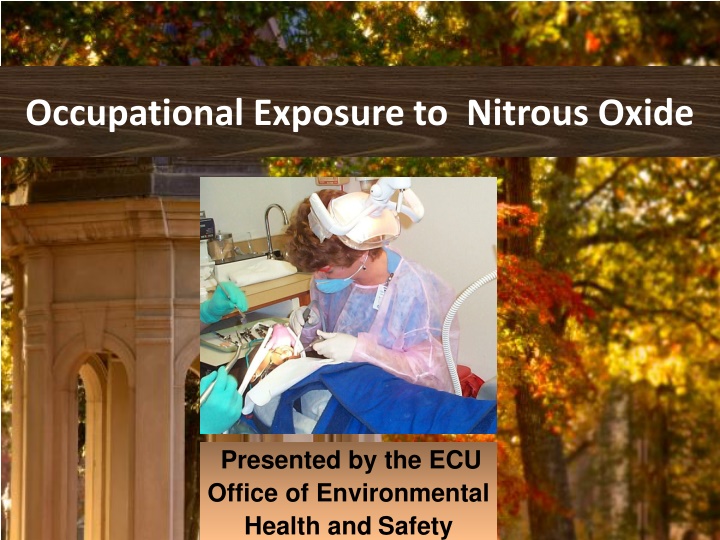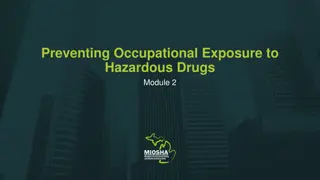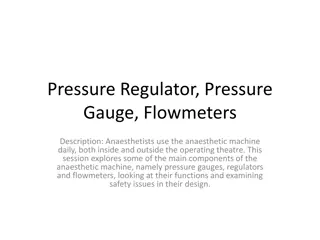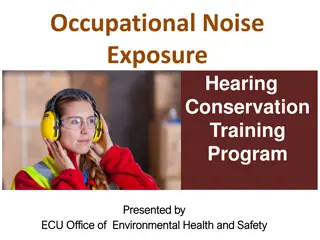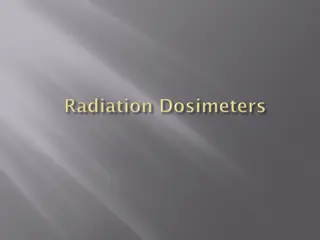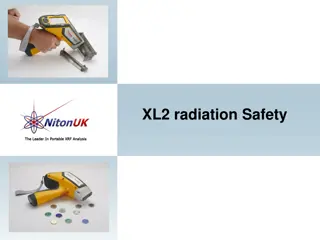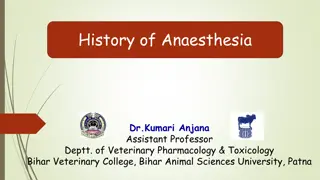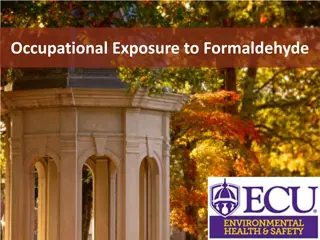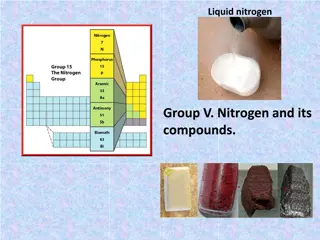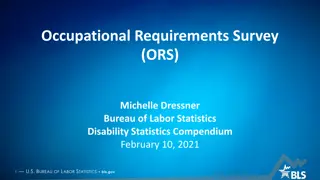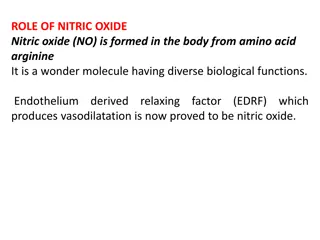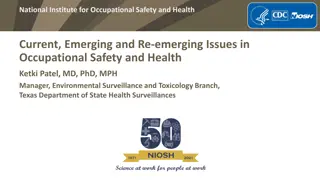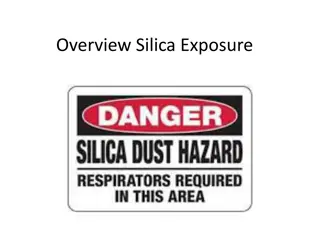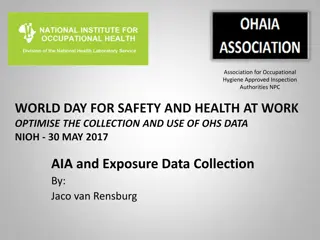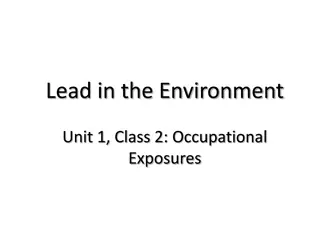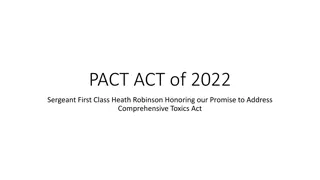Nitrous Oxide Occupational Exposure Guidelines and Monitoring
This information covers the occupational exposure to nitrous oxide, including its uses, chemical description, routes of exposure, health effects, monitoring methods, and regulatory exposure limits. Nitrous oxide is a colorless gas with various applications in medical, dental, and food processing industries. Exposure primarily occurs through inhalation or skin contact with liquefied gas, leading to potential acute and chronic health effects. The monitoring of exposure is essential, with recommended exposure limits set by ACGIH and NIOSH to protect workers. EH&S utilizes monitoring devices to assess exposure levels and ensure compliance with safety regulations.
Download Presentation

Please find below an Image/Link to download the presentation.
The content on the website is provided AS IS for your information and personal use only. It may not be sold, licensed, or shared on other websites without obtaining consent from the author.If you encounter any issues during the download, it is possible that the publisher has removed the file from their server.
You are allowed to download the files provided on this website for personal or commercial use, subject to the condition that they are used lawfully. All files are the property of their respective owners.
The content on the website is provided AS IS for your information and personal use only. It may not be sold, licensed, or shared on other websites without obtaining consent from the author.
E N D
Presentation Transcript
Occupational Exposure to Nitrous Oxide Presented by the ECU Office of Environmental Health and Safety
Uses of Nitrous Oxide Anesthetic agent in medical, dental,and veterinary operatories Food processing propellant Component of certain rocketfuels Oxidant for organiccompounds Nitrating agent for alkalimetals, etc.
Chemical Description A colorless gas stored as a liquid Synonyms: laughing gas, factitiousair, nitrogen oxide, dinitrogenmonoxide Chemical formula: N2O Clear, colorless gas atroom temperature Slightly sweet odor and taste
Routes of Exposure Exposure to nitrous oxide occurs primarily through inhalation. Skin exposure to liquefied gas may occur when handling compressed gas cylinders. This is a result of the rapid evaporation of the liquefiedgas.
Health Effects Breathing Nitrous Oxide can irritate the eyes, nose and throat causing coughing and/or shortness of breath. Acute: dizziness, slurred speech, difficulty breathing, headache, nausea, fatigue, irritability Chronic: tingling and numbness; difficulty concentrating; interference with gait; reproductive effects; neurologic, renal, and kidney disease Pure nitrous oxide will result inasphyxiation. Cryonic burns (or frostbite) may occur when handling compressed gas cylinder.
How EH&S Monitors Exposure An Assay Technology ChemDisk monitor for nitrous oxide is worn for the duration of the procedure on the lapel to represent the breathing zone. The disk is collected and sent to an AIHA accredited laboratory for testing. A report of the resultsis distributed to thesupervisor and the employee.
Employee Exposure to Nitrous Oxide OSHA does not regulate nitrousoxide exposure. NIOSH Recommended Exposure Limit (REL) 25ppm ACGIH Threshold Limit Value (TLV): 50 ppm as a TWA EH&S compares your exposure tothe ACGIH TLV.
ACGIH TLV TWA ACGIH Threshold Limit Value is the average concentration for a normal 8-hour workday and a 40-hour workweek to which nearly all workers may be exposed repeatedly, day after day, without adverse effects.
When Will Monitoring Take Place? Exposure monitoring is the first step to measure nitrous oxide and determine the type and extent of controls that are necessary. Such monitoring include: Initial monitoring Annual monitoring Periodic monitoring when initial resultsare above the TLV or there is a change in the procedure.
Protective Work Clothing and Equipment Scavenging system provides adequate respiratory protection when operating within design specifications. Thermal resistant gloves are necessary when handling compressed gas cylinders,as this may present a cryogenic hazard.
Leaks Stop the leak (shut off cylinder) if itis possible to do so without risk. Provide additional ventilation to the area. Isolate the area until gas has dispersed.
Storage Cylinders should be secured with straps or chains to prevent physical damage. For additional storage information,visit www.ecu.edu/oehs/LabSafety/compressed.htm
Control Measures for Anesthetic Delivery System Check all rubber hoses, connections,tubing, and breathing bags. Check both high and lowpressure connections. Check nitrous oxide and oxygenmixing system. Perform leak testing of theequipment.
Control Measures for Scavenging System Assure that the nitrous oxide is turned on only if the scavenging system is also activated.
Control Measures for Scavenging System To prevent significant leakage, scavenging system exhaust rates should be approximately 45 L/min,cegardless of the number of systems operating ata time. Monitor flow rate witha flowmeter.
Control Measures for Scavenging System Supply scavenging mask in a variety of sizes to ensure a secure fit over the patients nose or face. All scavenging pumpsshould vent to the outside of the building away fromfresh air intakes, windows,and walkways.
Work Practices to Control Exposure Do not fill the breathing bag tocapacity with nitrous oxide. Minimize speech and mouth breathing bythe patient during the procedure. After the procedure, flush the system of nitrousoxide.
To receive credit for this training please complete the linked QUIZ Questions 211 South Jarvis Street, Suite 102, Greenville NC 27858 Online: www.ecu.edu/oehs Email: safety@ecu.edu Phone: (252) 328-6166
